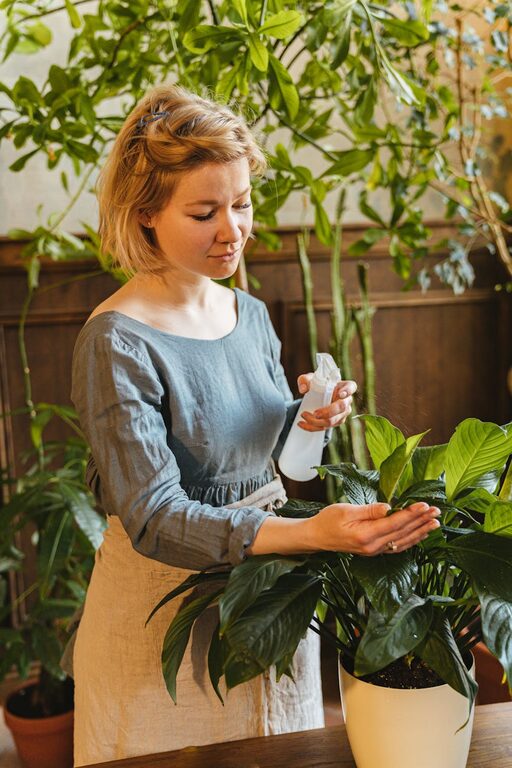
Essential Tips for Keeping Your Houseplants Healthy and Thriving
Bringing houseplants into your living space is a wonderful way to add natural beauty and fresh air to your home. However, keeping these plants healthy requires a bit of attention and care. Whether you are a beginner or an experienced plant lover, this guide will provide essential tips to help your houseplants thrive.
Understanding Your Plant’s Needs
Each houseplant species has unique needs when it comes to light, water, humidity, and temperature. Understanding these basic requirements is the first step to ensuring your plants stay healthy.
Light Requirements
– Identify Light Needs: Some plants prefer direct sunlight, while others thrive in low or indirect light. For example, succulents generally need bright light, whereas ferns enjoy shaded areas.
– Place Plants Accordingly: Position your plants near windows or spots that match their preferred light levels.
– Rotate Plants Regularly: Rotate your pots every week or two so all sides receive even light and grow symmetrically.
Watering Wisely
– Check Soil Moisture: Before watering, check the soil with your finger. If the top inch is dry, it’s usually time to water.
– Avoid Overwatering: Too much water can cause root rot. Ensure your pots have drainage holes to prevent waterlogging.
– Watering Frequency: This varies by plant type, pot size, and environment. Most houseplants need watering once a week, but some may require more or less.
Humidity and Temperature
– Maintain Humidity: Many houseplants like moderate to high humidity. You can increase humidity by misting leaves, using a humidifier, or placing a tray of water near your plants.
– Stable Temperature: Keep your plants in a stable temperature environment, ideally between 65°F and 75°F (18°C – 24°C). Avoid placing plants near drafts, heaters, or air conditioners.
Choosing the Right Pot and Soil
Pot Selection
– Size Matters: Choose a pot that is slightly larger than the plant’s root ball. Pots that are too large can hold excess water, contributing to root rot.
– Drainage: Always use pots with drainage holes to help excess water escape.
Soil Type
– Potting Mix: Use a high-quality potting mix appropriate for your plant type. For example, succulent soil is sandy and drains quickly, while tropical plants thrive in soil rich in organic matter.
– Repotting: Refresh your plant’s soil every 1-2 years to replenish nutrients and promote healthy growth.
Feeding Your Houseplants
– Fertilize Regularly: During the growing season (spring and summer), feed your plants with a balanced, water-soluble fertilizer about once a month.
– Avoid Overfeeding: Too much fertilizer can harm plants. Follow label instructions carefully.
Maintaining Plant Health
Regular Cleaning
Dust and debris on leaves can block sunlight and reduce photosynthesis. Wipe leaves gently with a damp cloth every few weeks to keep them clean and vibrant.
Pruning and Trimming
– Remove Dead Parts: Trim off dead or yellowing leaves to encourage new growth.
– Shape Your Plant: Prune leggy or overgrown sections to maintain a healthy, attractive shape.
Pest Control
– Inspect Plants: Regularly check for pests such as spider mites, aphids, and mealybugs.
– Natural Remedies: Use mild soapy water or neem oil sprays for small infestations. For severe issues, consult with your local garden center.
Creating a Consistent Care Routine
Establishing a care routine helps you remember to water, feed, and check on your plants. Make a schedule or set reminders so your plants get timely attention.
Troubleshooting Common Issues
Yellowing Leaves
This can indicate overwatering, underwatering, or nutrient deficiency. Assess watering habits and soil condition to determine the cause.
Wilting Plants
Often a sign of underwatering or root problems. Check soil moisture and inspect roots if necessary.
Slow Growth
Could be due to insufficient light, poor soil, or lack of nutrients. Adjust care accordingly.
Final Thoughts
Keeping houseplants healthy is rewarding and improves your indoor environment. By paying attention to their needs and creating a care routine, you can enjoy lush, thriving greenery in your home year-round. Remember that patience and observation go a long way—plants communicate through their appearance, so responding early to their signals will keep them happy and healthy. Happy gardening!
